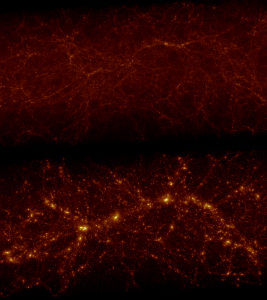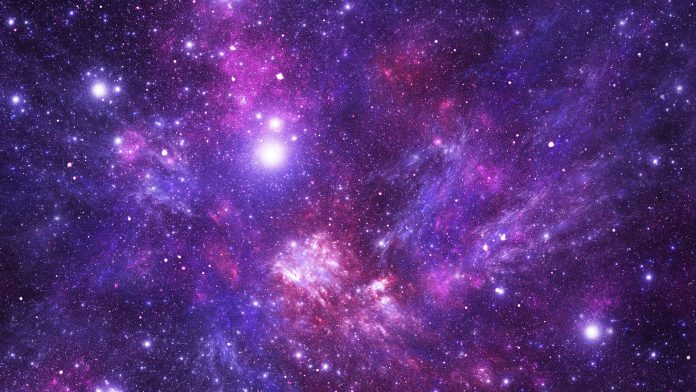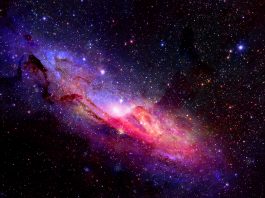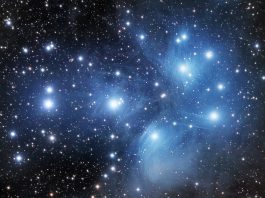Researchers at the University of Tokyo have created ‘time machine’ simulations to study the lifecycle of ancestor galaxies.
For the first time, researchers have produced simulations that directly recreate the full lifecycle of some of the largest collections of ancestral galaxies observed in the distant Universe 11 billion years ago.
The findings were published in a new study in Nature Astronomy.
The importance of cosmological simulations
Cosmological simulations are crucial when studying how the Universe became the shape it is today. However, many of these simulations do not typically match what astronomers observe through telescopes – most are designed to match the real Universe in a statistical sense.
On the other hand, constrained cosmological simulations are designed to directly reproduce the structures we actually observe in the Universe. A majority of the existing simulations already conducted have been applied to our local Universe, meaning close to Earth, but never for observations of the distant Universe and ancestral galaxies.
A team of researchers, led by Metin Ata, first author from the Kavli Institute for the Physics and Mathematics, and Project Assistant, Professor Khee-Gan Lee, were interested in distant structures. This focus included massive galaxy protoclusters, which are ancestors of present-day galaxy clusters before they could clump under their own gravity. They discovered that current studies of distant protoclusters were sometimes oversimplified, and were conducted through simple models and not simulations.

Analysing the lifecycle of ancestral galaxies
“We wanted to try developing a full simulation of the real distant Universe to see how structures started out and how they ended,” explained Ata.
Their result was COSTCO (Constrained Simulations of The Cosmos Field). Lee remarked that developing the simulation was much like building a time machine, as light from the distant Universe is only reaching Earth now; the galaxies telescopes observe today are a snapshot of the past.
“It is like finding an old black-and-white picture of your grandfather and creating a video of his life,” he added.
In this sense, the researchers took snapshots of ‘young’ grandparent galaxies in the Universe and then fast-forwarded their age to study how clusters of galaxies would form. The light from galaxies the researchers utilised travelled a distance of 11 billion light-years to reach us. What was most challenging was taking the large scale environment into account.
“This is something that is very important for the fate of those structures, whether they are isolated, or associated with a bigger structure. If you do not take the environment into account, then you get completely different answers. We were able to take the large-scale environment into account consistently, because we have a full simulation, and that is why our prediction is more stable,” explained Ata.
Testing the standard model of cosmology
Another significant reason why the researchers created these simulations was to test the standard model of cosmology, that is utilised to describe the physics of the Universe. By predicting the final mass and final distribution of structures in a given space, researchers could unveil previously undetected discrepancies in our current understanding of the Universe.
Using their simulations, the researchers were able to find evidence of three already published galaxy protoclusters and disfavour one structure. They were also able to identify five more structures that consistently formed in their simulations. This includes the Hyperion proto-supercluster, the largest and earliest proto-supercluster known today that is 5,000 times the mass of our Milky Way galaxy, which the researchers discovered will collapse into a large 300 million light-year filament.
Their work is already being applied to other projects, including those that intend to study the cosmological environment of galaxies, and absorption lines of distant quasars, to name a few.









